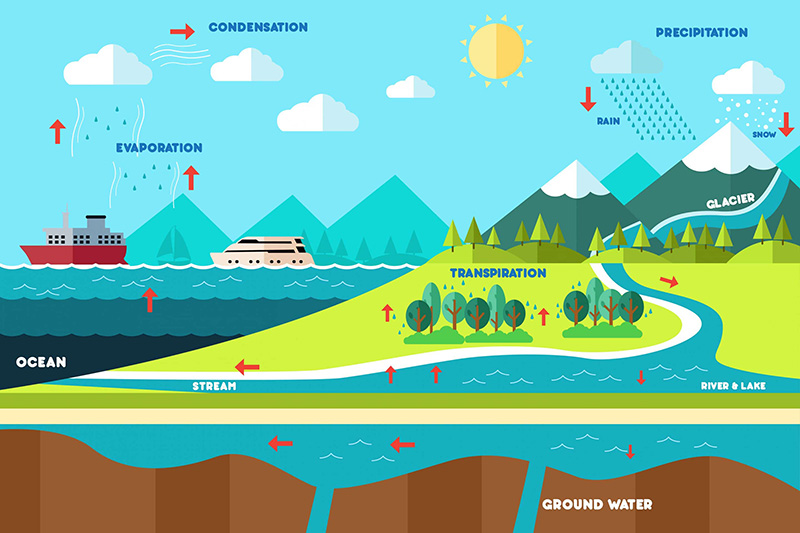How the Water Cycle Works
There is the same amount of water on the earth today as there was billions of years ago. No new water is being made or lost. Water simply moves from one place to another in different forms.
The water cycle can be described as water evaporating into the atmosphere where it condenses (change or cause to change from a gas or vapor to a liquid) into clouds before it falls back to earth as precipitation (rain, sleet or snow). This precipitation either soaks down into the soil (infiltration) where it joins groundwater, or it runs off over the landscape to join surface water. That surface water may evaporate out of the lake back into the atmosphere or water moving through the soil toward groundwater may be taken up by plants and transpired into the atmosphere. The process is continuous without a beginning or an end.
Many of us learned that the water cycle followed a circular path much like that of a clock. This visual is not very accurate. It is more precise to envision a web of sorts with water moving in many directions.
Icebergs move water vapor into the atmosphere through the process of evaporation just as they also move water in its solid state into a liquid state melting into the sea. Ocean currents move water all over the globe melted from icebergs, or gained from rivers flowing into oceans and seas and from rain and snow precipitation from water vapor. Wind moves water all around the earth with air currents picking up evaporated water in one place and dropping it via precipitation in another place. Plants and animals move water as well – so water is always moving in many different directions at any given time.

